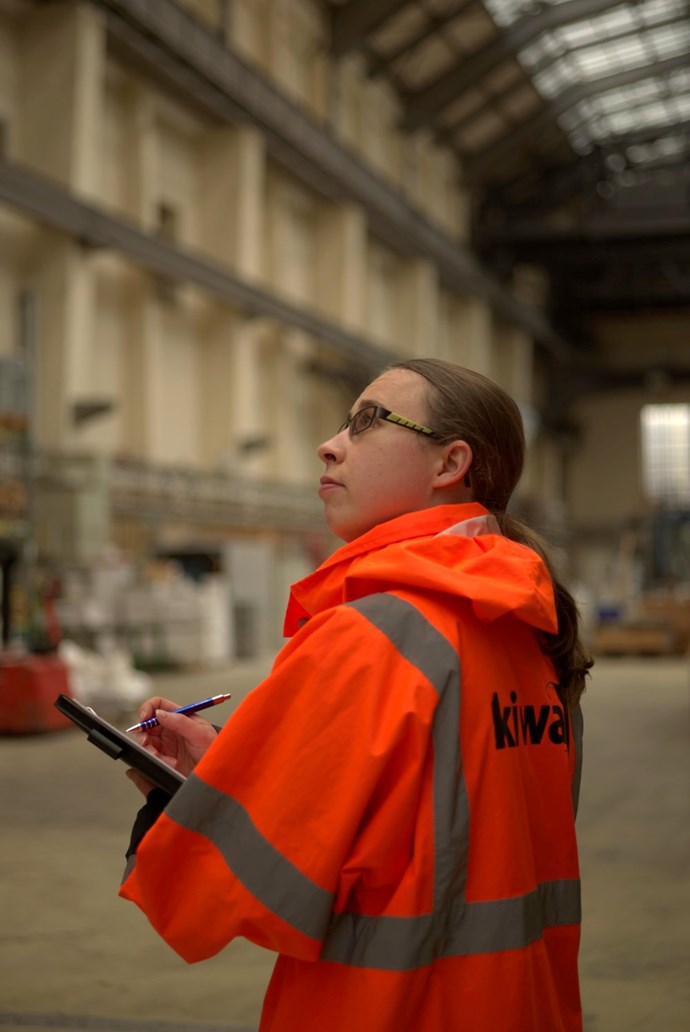How building inspection can literally save lives
Whether an industrial production hall, an office or a residential tower, a building must be safe for people to work and live in. To avoid damage and personal injuries of those using it, regular inspection can play a key role. In Germany, the VDI 6200 Directive, ‘Structural safety of buildings’, is the comprehensive inspection guideline. Kiwa Germany’s Engineering team is intimately familiar with it.
One would expect VDI 6200 to be in use for quite a while – but it’s not: the VDI (Verein Deutscher Ingenieure), the German Engineers Association, published the directive only in 2010. It was a reaction to a tragic accident in Bad Reichenhall, a Bavarian spa town in the far southeast of Germany. Early 2006, an ice rink building collapsed after heavy snowfall and structural changes that proved to weaken the construction. Fifteen people including twelve children were killed.
Drilling and welding
It proved a wake up call as Germany until 2010 didn’t have strict regulations for building structure stability and safety. VDI 6200 brought necessary change. The guideline describes how to carry out regular inspections of the structural safety of buildings. It contains assessment and evaluation criteria, checklists, practical instructions and recommendations for both existing and planned buildings. It also references the international DIN EN 1990 Eurocode, ‘Basis of structural design’.
“As such, it is a guideline for property owners, authorized parties and experts involved”, says Nina Becker. She is one of the Kiwa Engineering team members and inspects all kinds of buildings under the VDI 6200 on a day-to-day basis. Bridges and tunnels are not included; separate guidelines exist for those. “Although one can never prove that VDI 6200 could have avoided the Bad Reichenhall disaster, I believe that proper ad regular inspection of a building’s structure greatly improves its safety. In the case of Bad Reichenhall, it would have literally saved lives.”

Photo: Nina Becker, Building Material Engineer at Kiwa Germany, conducting a building inspection.
Moisture is omnipresent
The Kiwa Engineering team receives enquiries from property owners and property managers ranging from governmental bodies to industrial companies. “They are obliged to have their buildings safe and ensure no one is at risk”, says Nina. When inspecting a building, she and her colleagues have to take many things into account. For one thing, all inspection activities take place while the building is in operation. “It’s really hands-on investigation here. We inspect the façade, often using a cherry picker with platform to reach points where there might be damage or other problems. Further critical points are the roofs and their structure, floor areas, supports, the walls in each room – in short, everything related to the construction. One culprit an inspection never fails to uncover? Moisture. Moisture where you don’t want it is a potential threat to every building.”
Off the beaten track
As inspection engineers, Nina and her colleagues cross Germany to visit objects great and small, from baths and spas to monasteries, sailing club houses and industrial halls. Even excavation pits, often off the beaten track, belong to their activities. “It happened more than once that we had to go beyond paved roads and our cherry picker got stuck in the mud and had to be pulled out”, she reports. “But our strength is that we are really hands-on. We adapt to circumstances, we happily go from one side of the country to the other and even cross the border, take every health and safety measure we need and don’t hesitate to work at height to perform our job. I like it.”
Sometimes, I just pick up a pencil on-site and start drawing.Nina Becker
In many cases, no plans or documentation exist for inspections like these. As a basis, at least a floor plan has to be available. “Fortunately, we can often fall back on emergency and fire protection plans. But sometimes, although it rarely happens, I just pick up a pencil on-site and start drawing. When it comes to the inspection itself, we use the four eyes principle: one of my colleagues or I go around the building with the caretaker or user. That way, we make sure we miss nothing, especially the first time.”
Eye opener
Afterwards, the inspection report serves as a basis for subsequent visits, generally once every two to three years. And there’s more, Nina continues. “The report not only grades and describes the current state of a building, but also includes recommendations for improvement that could be implemented directly. We carefully map and photograph any damage we discover so that action can be taken. Building owners can also use the report to plan maintenance to supporting structures. An inspection according to VDI 6200 serves as a starting point for deeper investigations if needed, for planning and monitoring. Next to a door opener, it never fails to be an eye opener.”



